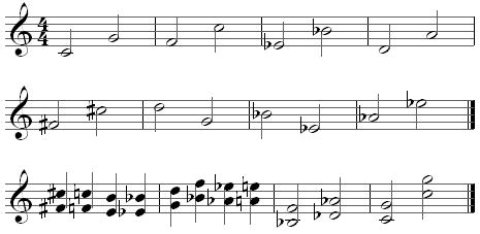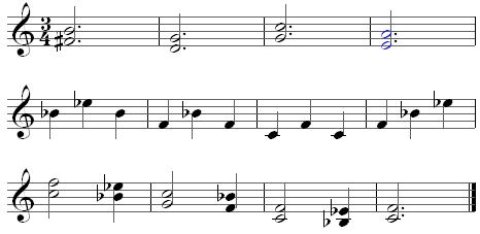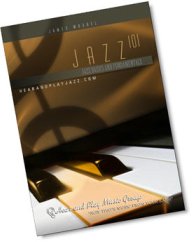Perfect Intervals
seconds - thirds - fourths & fifths - sixths - sevenths
Perfect Intervals - Augmented Intervals - Diminished Intervals
unison - 4th - 5th - octave
Here are some common abbreviations for the various interval types:
- PERFECT = P (perfect5 or P5)
- MAJOR = maj or M (maj7 or M7)
- MINOR = min or m or - (min7 or m3 or -7)
- AUGMENTED = aug or + (aug5 or +5)
- DIMINISHED = dim or ° (dim5 or °5)
Diatonic intervals that are perfect are the unison, 4th, 5th and octave. The structure, or make up of perfect intervals is:
- P4 = 5 half steps (or 1 & 4 of a major scale)
- P5 = 7 half steps (or 1 & 5 of a major scale)
- P8 = 12 half steps (or 1 & 8 of a major scale) To me the perfect intervals have an open, hollow sound - they don't set a mood (stability, peace, somber, tension, dissonance) like the major, minor, augmented and diminished intervals do.
Recently popular, contemporary music has introduced and used POWER CHORDS. These are referred to as 5 chords (C5 - D5 - G5 etc.) They are 2 note chords, perfect 5ths that are usually in the bass and punctuated in a higher range by guitars and/or other instruments. Here are some examples of perfect intervals:
perfect 5ths

Notice how 5ths are either on lines (with 1 line between each note) - or on spaces (with 1 space between each note).
IMPORTANT
Be aware that Eb to Bb is a 5th but Eb to A# is a 4th (even though they are enharmonically the same. Intervals are measured by letter names - therefore E to B is a 5th, but E to A is a 4th. (sharps or flats don't matter - it's letter names that determine the size of the interval)
perfect 4ths

Notice how with 4ths, one note is on a line (then skip a line) and the other note is on a space.
IMPORTANT
Notice that (just like above) F# to B is a 4th but Gb to B is a 3rd (even though they are enharmonically the same. Intervals are measured by letter names - therefore F to B is a 4th, but G to B is a 3rd. (sharps or flats don't matter - it's letter names that determine the size of the interval)
perfect 8s (octaves)

Octaves are commonly used by players, many times in the melody for guitar or piano - and especially in the bass (left hand) for piano. They give a solid foundation to the over-all harmony and music texture.
Octaves are pretty easy to recognize - the bottom note is on a line, then skip 3 lines and the top note is on the space...
or vice-versa
the bottom note is on a space, then skip 3 spaces and the top note is on the line...
Here is an example of some 5ths, octaves and power chords in the left hand of a piano part.
Notice how "open" and solid the harmony sounds in this example:
power chords - octaves in bass


seconds - thirds - fourths & fifths - sixths - sevenths
Perfect Intervals - Augmented Intervals - Diminished Intervals
THE COMPLETE
ONLINE BUSINESS BUILDER
SBI
Hi and Welcome!
Fill out the form below to sign up for the free periodic
Player's Guide Newsletter!
Get tips and ideas about substitute chords, chord progressions and harmonic movement.



